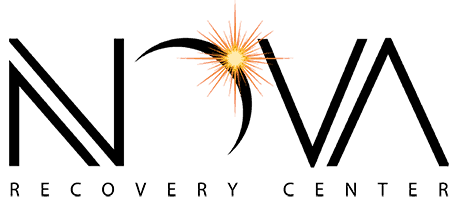Norco

Norco Addiction: Side Effects, Detox, Withdrawal, and Treatment

Table of contents
What Is Xanax?
Xanax is one of the most commonly prescribed benzodiazepines in the United States. Doctors use Xanax to treat patients who are suffering from anxiety and panic disorders, such as social anxiety disorder, various phobias, and generalized anxiety disorder. Although this drug is very effective in treating anxiety-related disorders, it is also highly addictive and frequently abused.
Xanax is a central nervous system depressant, so when consumed, it produces a calm and relaxed feeling. The pills come in many different sizes and colors, depending on the dosage, but taking Xanax in large quantities can exacerbate the normal effects of the drug.
Alprazolam (the generic name of the drug) is sold under several brand names, including Xanax, XR, and Niravam. It’s in the benzodiazepine family of drugs, alongside , Klonopin, and Ativan, among others.
Is Xanax a Controlled Substance?
Yes, Xanax is a Schedule IV controlled substance in the U.S., which means it’s considered to have a low potential for abuse. However, thousands of people seek treatment for Xanax addiction every year and it’s often the sole drug of abuse. What we mean by that is, many people get addicted to Xanax on its own. They don’t abuse any other drugs with it.
Slang for Xanax
The following terms are street names or slang for Xanax:
- Xannies or Zannies
- Bars
- Benzos
- Handlebars
- Blue footballs
Is Xanax Addictive?
Yes, Xanax is highly addictive. In fact, Xanax is considered one of the most addictive benzodiazepine medications on the market today. Since it is a fast-acting benzo, users feel its effects very quickly, which can contribute to chronic abuse and addiction. Crushing and snorting Xanax can lead to an even faster onset of its effects.
People who abuse Xanax often consume Xanax bars, which are pill-sized Xanax tablets that can be broken down into quarters and taken individually. Each Xanax bar is a 2-milligram dose. When a person develops a tolerance to it, they often double up on a dose and take two, quarter pieces to experience stronger effects. Taking an entire Xanax bar can produce dangerous side effects like aggressive behavior and irritability, followed by uncomfortable withdrawal symptoms later.
Although there’s no such thing as a Xanax “high” (it doesn’t produce euphoria like cocaine or heroin), people who take Xanax recreationally say it feels relaxing, calming, and sedating.
How Common Is Xanax Abuse?
Xanax is one of the most frequently prescribed benzodiazepines in the United States. According to the 2016 National Survey on Drug Use and Health, 6.9 percent of the population (18.7 million people) abused prescription drugs like Xanax in the past year. Although many people take Xanax for anti-anxiety purposes, it can end up being very addictive, even if it is taken as prescribed.
Physical dependence and addiction to Xanax can develop as a result of several different behaviors, including:
- Taking more Xanax than the doctor prescribed or taking it more often
- Taking someone else’s prescription
- Consuming large amounts of Xanax purely for the purpose of getting high
- Taking Xanax in a different way other than prescribed (injecting it, snorting it, taking it with other drugs or alcohol)
Abusing benzodiazepines like Xanax can also easily lead to overdose, especially if large amounts are taken with other depressants like alcohol.
Struggling with Xanax addiction? We can help.
Call Nova Recovery Center at (512) 605-2955 for more information about our 90-day rehab programs for men and women.
What Are the Side Effects of Xanax Abuse?
Xanax side effects can be exacerbated with continuous abuse. Short-term effects of Xanax abuse may include:
- Relief of anxiety
- Drowsiness
- Sleepiness
- Nausea
- Constipation
- Headache
- Dizziness
- Irritability
- Constipation
Long-term effects of Xanax abuse may include:
- Learning and memory problems
- Coordination problems
- Depression
- Hallucinations
- Aggressive behavior
- Delusions
- Overdose
- Dependency
- Addiction
Although many of the short and long-term effects of Xanax abuse are unpleasant, Xanax abuse continues to be common because the pleasurable effects are felt almost instantly. This makes many people want to take more and more of them, and they eventually develop a tolerance to the drug.
What Are Common Signs of Xanax Addiction?
Xanax is not intended for long-term use so chronic misuse of this drug can result in physical dependence and/or addiction. A person may even become addicted after as little as two weeks. In fact, 40 percent of people who take benzodiazepines every day for six weeks or more will develop an addiction.
You may be unsure if you or a loved one is addicted to Xanax, but there are certain behavioral and psychological signs you can look for. Common signs of Xanax addiction include:
- Needing higher doses of Xanax to feel the same effects
- Experiencing withdrawal effects after discontinuing Xanax use
- “Doctor shopping” to get more Xanax
- Feeling like you need to take more Xanax than was prescribed
- Isolating yourself from friends and family
Xanax Detox and Withdrawal
If a person is physically dependent or addicted to Xanax, he or she will experience uncomfortable withdrawal symptoms when all Xanax use is discontinued. Xanax withdrawal symptoms include:
- Sweating
- Seizures
- Diarrhea
- Insomnia
- Tremors
- Anxiety
- Panic
- Paranoia
- Loss of appetite
- Blurry vision
- Aching muscles
- Heart palpitations
Drug withdrawal of any kind should never be attempted on your own at home, as it can be very unpredictable and dangerous. If you are addicted to Xanax and are trying to get sober, the safest and most comfortable way to do so is with a medically-assisted Xanax detox program.
Medical detox programs provide 24/7 medical assistance and individualized programs to address your specific needs. This process involves a comprehensive physical assessment that will determine your physical and psychological needs during detox.
Completing a medically-assisted Xanax detox program also reduces the likelihood of relapse because clients have consistent professional support through each stage of the detox process. They are also housed in a clinical environment throughout the duration of detox, so they are less likely to be tempted to give in to cravings and use any drugs that are present in the home environment.
Overcoming Xanax addiction is possible.
Medical detox and rehab can provide tools and resources to get sober.
Start your recovery today by calling (512) 605-2955.
Xanax Withdrawal Timeline
Xanax withdrawal will be different for each person who experiences it and the symptoms experienced, as well as the timing in which they appear, varies greatly. This timeline is an approximate estimation of what you may experience during Xanax detox.
| 24-72 hours after the last dose: | Xanax withdrawal symptoms may be at their worst during the first few days. A person may experience nausea, vomiting, mood swings, insomnia, and increased heart rate. They are also at increased risk for seizure during this time period. |
| 4-7 days after the last dose: | Insomnia, irritability, depression, and cravings may continue during this time and a person’s heart rate may continue to race several days into Xanax withdrawal. |
| 2-4 weeks after the last dose: | Some emotional symptoms of Xanax withdrawal may continue and insomnia is also common. Most of the severe physical symptoms will be gone at this point, but anxiety is common and may continue for months or even years after Xanax detox is complete. |
Long-Term Xanax Rehab
While a medically-assisted detox program will address the physical aspects of Xanax addiction, rehab will address the psychological and behavioral aspects of addiction. During rehab, clients will address deeply rooted personal issues and learn how to make lifestyle changes that will help them maintain their sobriety and replace old, unhealthy habits with new ones.
According to the National Institute on Drug Abuse, long-term addiction treatment of 90 days or longer will provide the best opportunity for lasting sobriety. In contrast, a 30-day Xanax rehab program may not provide adequate time and support necessary to truly make the behavioral and psychological changes needed to overcome addiction.
During long-term drug rehab, clients will attend educational sessions, 12-step support group meetings, and group and individual counseling. This time will be spent learning about and implementing relapse prevention strategies, gaining life skills, and working through the 12-step recovery program. This is also a very important time in which clients will begin establishing a recovery support system of peers, counselors, and recovery specialists.
Inpatient Xanax Rehab vs. Outpatient Xanax Rehab
There are two main types of Xanax rehab options: inpatient rehab and outpatient rehab. When a client enrolls in inpatient rehab, he or she will live on-site at the rehab center for the duration of the program. Inpatient programs provide more overall structure, as clients must adhere to a daily schedule, and contact with the outside world is limited.
Outpatient rehab, on the other hand, gives clients the ability to attend rehab while living at home, working, and/or attending school. Programs are comprised of eight weeks or more of group sessions that focus on addiction education, relapse prevention, and the 12-step program.
Choosing the right type of Xanax treatment program will depend on your personal needs or the needs of your loved one.
The cost of a Xanax rehab program will vary depending on several different factors, but clients may pay for the treatment with various options such as:
- Medical insurance
- Private loans
- Employee Assistance Programs (EAPs)
- Out-of-pocket payments
If you have questions about how to pay for Xanax treatment, please call Nova Recovery Center today to speak with an admissions specialist who can help.
Continued Care Options for Xanax Addiction Treatment
Xanax addiction is something that will take consistent effort and time to overcome. Once a person has completed rehab, he or she may also choose to continue Xanax treatment with additional recovery support programs like sober living or aftercare. Both types of programs are ideal for rehab alumni who are seeking continued support in their sobriety.
Sober Living Programs
Sober living programs (also referred to as transitional living or transitional housing programs) provide structured, safe, and sober living environments for men and women who are recovering from addiction. Many sober living homes also provide recovery support services like employment and education assistance, drug and alcohol testing, personal monitoring programs, and tiered recovery programming to help residents maintain their sobriety.
Although sober living programs are less structured than Xanax treatment in rehab, they are ideal for clients in all stages and recovery and can provide the essential peer support that is needed make the transition from a life of addiction into an independent life of recovery.
The overall cost of a sober living program will vary, depending on the location, the type of sober living home, and the recovery services offered.
Aftercare Programs
Aftercare programs are specifically designed to support rehab alumni as they continue their sobriety journey. These types of programs are comprised of regular group meetings that are facilitated in a safe, clinical location. Weekly meetings are used as sobriety check-ins and clients discuss personal issues and challenges they are facing with other individuals who are also in recovery.
Aftercare programs are perfect for individuals who need continued support to prioritize their recovery after completing a Xanax rehab program.
If you’re ready to make a change and enroll in Xanax treatment, please call Nova Recovery Center today for more information. Our admissions staff is waiting and ready to help you start a new sober life.
Nova Recovery Center offers a large range of substance abuse treatment services: detox, residential, outpatient and sober living.
Treatment Options
Treatment Locations
Call Us Now and Begin Healing at (512) 605-2955
Or text us and we will call you right back.
Not quite ready for a call? You can fill out the form below.
What Makes Us Different
- Gender-specific treatment
- Evidenced-based treatment
- 12-Step immersion
- 90-day residential treatment
- Family program
- Full continuum of care
- Insurance and private pay
100% Confidential Guarantee
Confidential Consultation
Nova Recovery Center is dedicated to helping you or your loved one get help. Please call or fill out this form for a confidential consultation.
One of our understanding, dedicated advisors will contact you about your options. Begin healing today.
Nova Recovery Center is dedicated to helping you or your loved one get help. Please call or fill out this form for a confidential consultation. One of our understanding, dedicated advisors will contact you about your options. Begin healing today.






